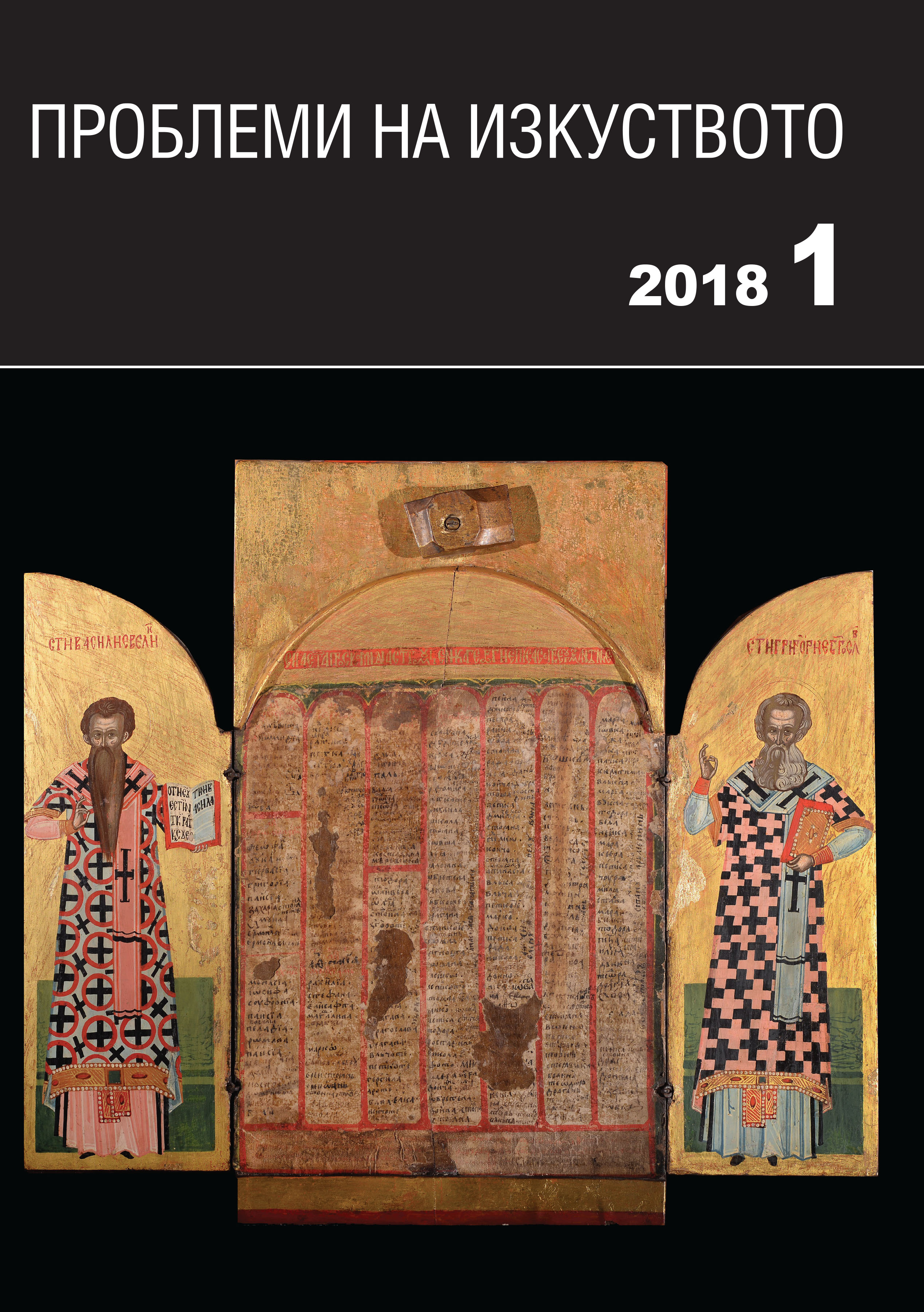Езикови и живописни паралели – наблюдения върху надписите в група паметници от края на XVI и началото на XVII век на Балканите
Linguistic and pictorial parallels: observations on the inscriptions in a group of monuments from the late 16th and early 17th century in the Balkans
Author(s): Tsvetan VasilevSubject(s): History, Language and Literature Studies, Fine Arts / Performing Arts, Modern Age, Theology and Religion, 17th Century
Published by: Институт за изследване на изкуствата, Българска академия на науките
Summary/Abstract: The article aims to present some observations on the language features of a group of monuments that most probably belong to the same art circle. In this context the analysis of linguistic data serves as an essential supplement to the stylistic analysis of the murals and could be used as a tool for a more complete description of the artistic production of one studio. The analyzed examples are mostly texts from the scrolls held by prophets and saints from the following monuments: Dragalevtsi Monastery of the Holy Mother of God (second layer of painting), Kurilo Monastery of St. John of Rila (1596), Seslavtsi Monastery of St. Nicholas (1616), Slimnitsa Monastery of the Virgin (1607), the Church of St. Theodore of Amasea and St. Theodore Stratelates (1614) in the village of Dobarsko, and the Church of the Assumption (1606) in the village of Zervat. In all monuments listed above the inscriptions are of the mixed type (Cyrillic and Greek); their examination is based upon as many linguistic aspects as possible: orthographic, phonetic, morphological and syntactical. This methodology allows for a greater reliability of the conclusions drawn. From the orthographic aspect, as regards the Cyrillic inscriptions there are noticeable similarities in the writing of the Yat vowel, the letter <÷>; usage of a specific combination of two superscript characters borrowed from the Greek language have also been observed. Parallel Cyrillic inscriptions from the scenes of the Last Supper, the Gethsemane Prayer, the Resurrection of Lazarus and Nativity of Christ are examined; also, Cyrillic inscriptions written on the scrolls of Anna the Prophetess on all monuments with the exception of the church in Zervat where the Greek inscriptions predominate considerably. Other identical inscriptions include those on the scrolls of St. Paul of Thebes in the Seslavtsi Monastery and in the church in Dobarsko, of the prophet Jonah from the Kurilo Monastery, the Seslavtsi Monastery and the church in Dobarsko, of the prophet Balaam from the church in Zervat and the Slimnitsa Monastery. All inscriptions are examined on the morphological, syntactic and textual levels, revealing that two spelling standards have been used in them simultaneously: Serbian and Middle Bulgarian. As regards the Greek inscriptions parallel texts from the scrolls of St. Euthymius the Great from the churches in Zervat and Dobarsko, the Slimnitsa Monastery and the Seslavtsi Monastery as well as two hymnographic texts from the Octoechos inscribed on the images of St. John Damascene and St. Cosmas of Maiuma are examined. The results of the study show that the comprehensive approach that combines a linguistic and a stylistic analysis is the most appropriate for the adequate determination and definition of the characteristics of this art circle of monuments in which similar iconographic and textual patterns are realized.
Journal: Проблеми на изкуството
- Issue Year: 2018
- Issue No: 1
- Page Range: 75-85
- Page Count: 11
- Language: Bulgarian
- Content File-PDF

